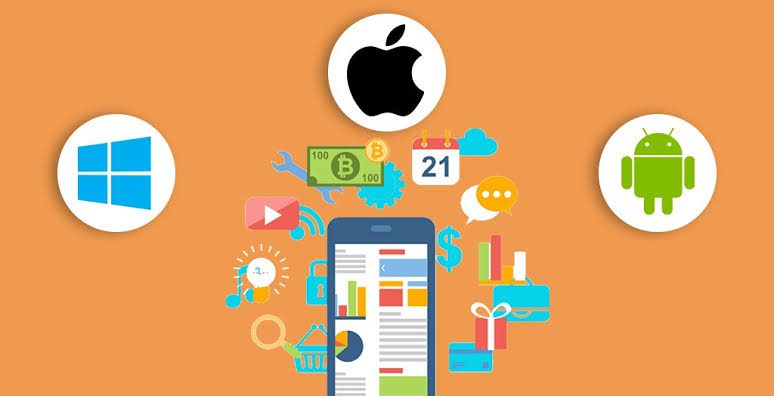Introduction
Cross-platform mobile app development enables creation across various platforms through a single codebase. Developers can save time and effort by using cross-platform development frameworks. These frameworks help developers write code once instead of developing separate native apps for each. This method allows Businesses and developers to expand their reach and maximize their mobile applications’ potential.
Benefits of Cross-Platform Mobile App Development
- Increased Reach: One effective way businesses can maximize their growth potential is to develop a cross-platform mobile application. This solution enables users on various operating systems to access the application, eliminating the need for separate apps for each platform and saving precious time and resources.
- Cost-Efficiency: With cross platform testing, companies can save costs using a shared codebase across multiple platforms. This aspect means developers only need to write and maintain one codebase, reducing development and maintenance costs.
- Faster Time-to-Market: Cross-platform frameworks and tools enable developers to streamline app development by reusing code and components. As a result, the development time reduces, and developers can deploy the app more quickly to the market.
- Consistent User Experience: Cross-platform development helps developers provide a consistent UX. Maintaining a unified design and functionality will enable users to easily transition between devices without encountering significant app behavior differences.
- Streamlined Maintenance: Maintaining and updating the app becomes more efficient with a single codebase for multiple platforms. Developers can implement changes or bug fixes once, which will be reflected across all supported platforms, reducing the maintenance time and effort that goes into it.
- Enhanced Productivity: Cross-platform development enables developers to work more productively by leveraging reusable code components. By writing code that they can share across platforms, developers can focus on implementing core features and functionalities rather than duplicating efforts for each platform individually.
- Simplified Deployment: Deploying a cross-platform app is simplified since you can compile a single codebase into platform-specific binaries; this eliminates the need to manage separate app store submissions and release processes for each platform, streamlining the deployment workflow.
Challenges of Cross-Platform Mobile App Development
- Performance Limitations: While cross-platform frameworks have improved significantly, there may still be performance trade-offs compared to platform-specific development. Some apps with complex graphics or heavy processing requirements may experience performance issues.
- Limited Access to Platform-Specific Features: Shared code is essential for cross-platform development. However, this might mean some platform-specific features and capabilities are unavailable. Developers may need to find workarounds or compromise on certain functionalities to ensure platform compatibility.
- Learning Curve: Cross-platform development often involves learning and working with specific frameworks and tools; this may require additional training or adopting new development practices for the development team.
- Debugging and Testing Challenges: Testing and debugging can be more complex in cross-platform development due to the variations across different platforms and devices. Ensuring consistent functionality and compatibility across multiple environments requires thorough testing and debugging.
- Fragmentation: Developers face the daunting task of creating apps that seamlessly function across various platforms, devices, and operating systems. Overcoming fragmentation challenges is essential to ensure consistent functionality and user experience in this diverse world of mobile devices.
- Performance Optimization: When developing cross-platform applications, achieving optimal performance across multiple platforms can be challenging. Developers must carefully optimize code and implement platform-specific optimizations to ensure smooth performance on different devices and operating systems.
- Platform Updates: As platforms evolve and release updates, cross-platform developers must keep up with the latest changes and ensure compatibility – this involves adapting the app’s codebase and addressing any potential issues introduced by platform updates.
Overcoming the Challenges
Choosing the Right Cross-Platform Framework
- Selecting the appropriate cross-platform framework is crucial for streamlining the development process and achieving optimal results.
- Frameworks like React Native, Flutter, and Xamarin offer code reuse and rapid development benefits.
Implementing Best Practices
- Adhering to best practices can significantly enhance the cross-platform development process:
- Utilize a Single Codebase: Write code once and reuse it across multiple platforms, minimizing duplication of effort.
- Responsive Design: Ensure your design’s UI is flexible and can adjust to resolution changes and screen sizes.
- Performance Testing: Perform thorough testing to pinpoint and address any issues causing performance delays.
- Native Plugins and Modules: Leverage platform-specific plugins and modules to incorporate native features seamlessly.
Collaboration and Communication
- Successful cross-platform app development requires effective collaboration and communication among team members.
- Effective coordination requires the establishment of clear communication channels, utilizing project management tools, and regular updates.
Continuous Integration and Delivery
- A CI/CD pipeline streamlines the app development process, allowing faster iterations and reliable deployment.
Conclusion
Cross-platform mobile app development offers significant benefits, including increased reach, cost-efficiency, faster time-to-market, and consistent user experience. However, it also presents challenges such as performance limitations, limited access to platform-specific features, learning curves, and debugging complexities. By carefully considering these factors, businesses can make informed decisions regarding adopting cross-platform development approaches to maximize the reach and efficiency of their mobile applications.
Mobile app testing platforms like HeadSpin can also help with cross-platform testing. It gives its users access to various real devices for comprehensive testing. Additionally, the HeadSpin AI enables software testing automation.

